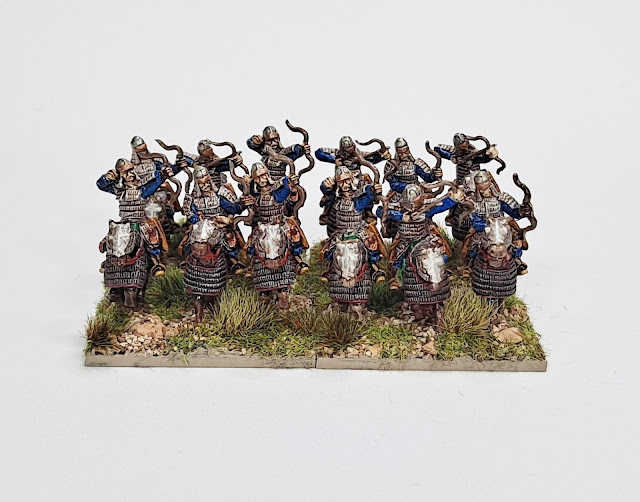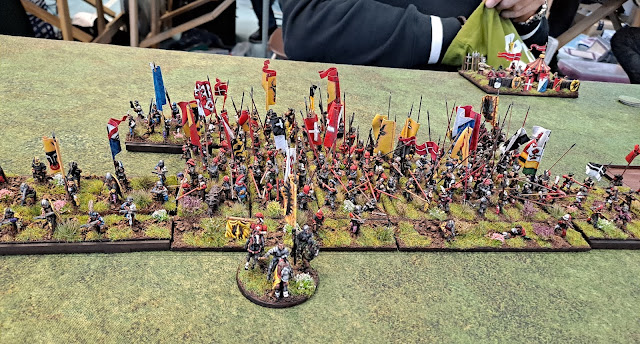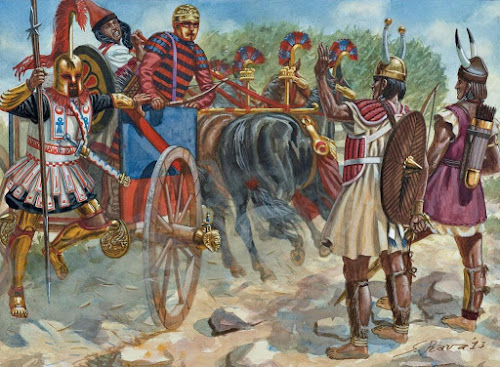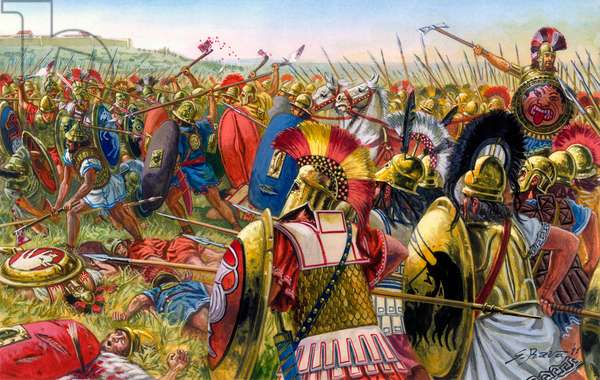The Quest for Khitan Cavalry
For a long time I have had the desire to do a Liao army, mainly for the reason that you don't see it very often and because the Khitans, who formed the Liao, seem to be a somewhat overlooked power despite their immense influence on China from the early 10th century to the early 12th. Even after the fall of their Liao dynasty a remnant formed the Qara Khitan empire in Central Asia until conquered by the Mongols, and it is likely that the west got the name Cathay for China from these Qara Khitai.
Alas I never got round to doing the army, mainly as nobody does suitable figures for it in the 15mm size I use, and I'm pretty sure not in larger or smaller figure sizes either - but let me know if I'm wrong.
But what about Essex? They do a range I hear some cry! This is true; however, they are not really suitable in my opinion. Let me explain.
Sources for Khitan/Liao in English are rare, but there are some pictorial sources and surviving artefacts. Of the pictorial sources the one I am most familiar with is the "Eighteen Songs of a Nomad Flute" scroll. The story it is based on dates back to Eastern Han times, however, the scroll was written and illustrated in the Song period and the nomads depicted are believed to be the Khitans.
The following scene shows a number of armoured nomad horsemen.
A couple of close ups show more detail.
We also have a description of the equipment the regular ordo cavalry were to carry in the Liao period - "3 horses, 1 forager, 1 orderly, 9 pieces of iron armour, saddle cloths, bridles, armour of leather and iron according to their (horses') strength, 4 bows, 400 arrows, a long and a short spear, a club (probably a mace), axe, halberd, small banner, hammer, awl, knife and flint, bucket for the horse, bag for dried food, a grappling hook, a felt umbrella, and 200 foot of rope to tie horses."
Compare these then to the Essex Miniatures figures.
I think you can see that they really don't match up that well. I suspect that the Essex figures, which have been around forever, were modelled on the old "Armies and Enemies of Ancient China, 1027 B.C.- 1286 A.D." WRG publication which is very out of date and was not wholly reliable when published. Can't blame them though, as back then it would be all that would be available. However, it does mean that I wouldn't use those figures.
Recently, after persuading the MeG List-meister, Richard Jeffrey-Cook to make some alternations to the Khitan Liao and the Qara Khitan lists I decided it was time I actually got around to building the army. Thus the quest for some figures that were closer to what I wanted than the Essex ones began ...
My first port of call was to post a question on the Society of Ancients forum to see if anyone there had any good ideas. It is a very useful place to go for these sorts of queries. Duncan Head was especially helpful.
A number of good suggestions were made. One was for some figures from the Legio Heroica Mongol range, another for the Khurasan Mongol range, a third for the Khurasan Jurchen range, and a fourth for the Khurasan Song range. Khurasan seemed to be hitting the spot somewhat on this. Here are some pictures from the various websites of potentially suitable figures:
Legio Heroica Mongols
Khurasan Mongols
Khurasan Jurchen
Khurasan Song
For various reasons I wanted to have figures shooting bows and with a spear/polearm and so the Song were discarded on that basis. I was not looking to mix ranges as I wanted all the figures to be size compatible and the above all vary in size - the Khurasan ranges are not a consistent size due to use of different sculptors so even mixing those was not an option.
You may have also noticed that plumes on the helmets do not appear to have been too common, although some extant helmets appear to have plume holders, and that the figures I had chosen do have plumes. I had decided that I would see just what they were like and maybe cut away those plumes that were easy to do, and maybe leave some. As it happened the plumes were modelled in such a way that removal was pretty straight forward, with only a small amount of remedial filing needed on some helmets to ensure the fairly rounded shape that seems typical. So all the plumes came off.







































Just catching up with reading since I had a busy week. :-) I loved this particular post. The bits of historical information you had backing up the creation of your army is the kind of information I am always looking for. A lot of bloggers post just photos of their armies, which is great eye candy, but I like the source information just as much.
ReplyDelete